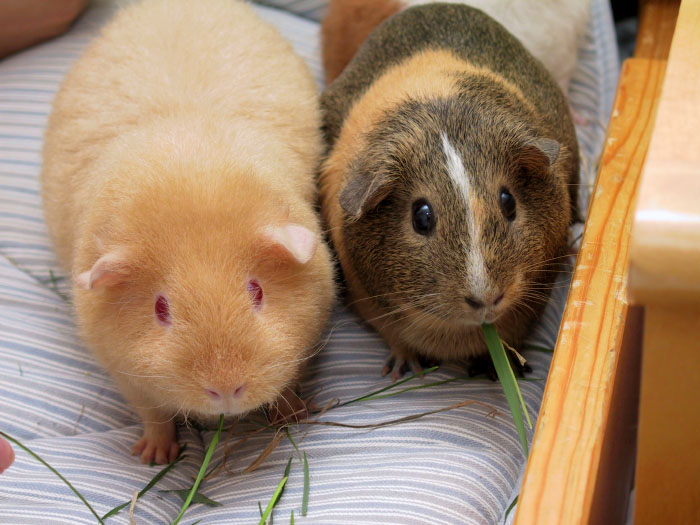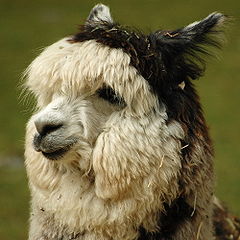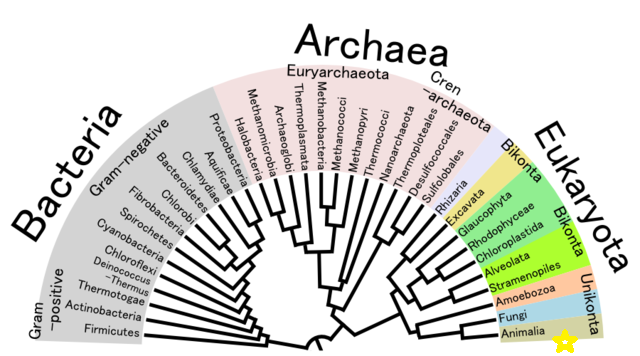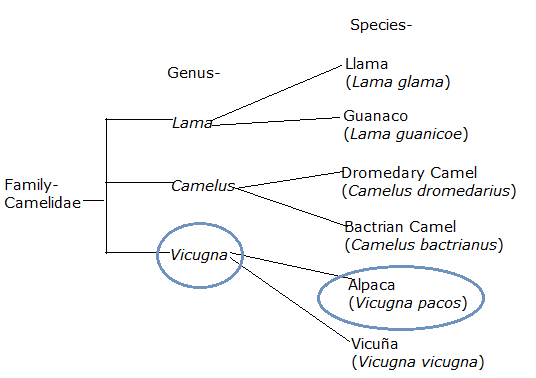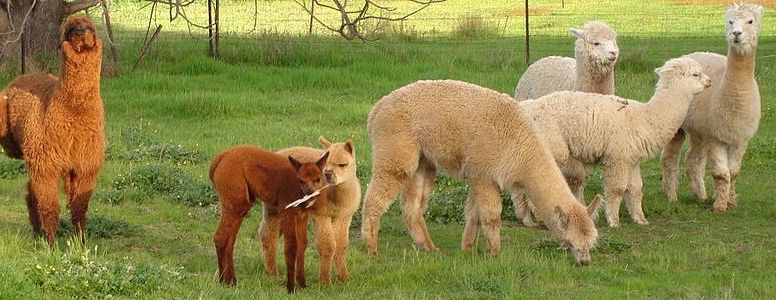
How do you classify an alpaca?
Scientific Classification
Domain: Eukarya
The domain Eukarya includes plants, animals, fungi, and protists. The
alpaca is put into the domain of Eukarya because their cells have a true
nucleus and membrane bound organelles. An example of a Eukaryote is the
spinner dolphin and
alfalfa.
Kingdom: Animalia
Organisms that fit into the kingdom of Animala are multicelluar and
heterotrophic. Being heterotrophic means that organisms eat other
organisms to acquire nutrients by ingestion. The organisms in this
kingdom do not have cell walls, they can move independently sometime
during their lives. Movement is done by cilia, flagella, or muscular based proteins. Other
animals that are in the kingdom Animalia, besides the alpaca, are the
American white pelican and
Atlantic cod.
Phylum: Chordata
All members of the phylum Chordata have a dorsal hollow nerve cord, a
notochord, styloid, pharyngeal slits and a muscular tail that extends beyond the
anus. These traits do not have to occur at any specific time in the life
cycle. They could happen while devolving and go away or stay for the
chordates whole life. The
cheetah
is another example, besides the alpaca, that falls into this phylum.
Subphylum: Vertebrata
All members have a unique set of joints known as vertebrae. They have a
notochord that is used in devolvement and then later becomes a bony
spinal column.
Class: Mammalia
To be characterized in the class of Mammalia the organism has to have
lungs to breathe, have hair or fur on their bodies, three specialized
ear bones used to hear, and mammary glands to feed milk to their young.
Most young is born alive, but not all. They also have a lower jaw that
attaches to the skull. They are endothermic or in other words they
regulate their own body temperatures. The
guinea pig
and
the
snow leopard are warm blooded just like the alpaca.
Order: Artiodactyla
The order Artiodactyla is a very diverse group, having about 220
species in about 10 families. Artiodactylas are paraxonic, this means
that between the third and fourth digits of the the foot is where their
plane of symmetry is located. Another mammal besides the alpaca that
fits in this order is the
giraffe
and the
hippopotamus.
Artiodactyla are also called the even-toed ungulates.
Family: Camelidae
The alpaca fits into the family of Camelidae because
of the way that it
bears weight on its feet similar to
camels.
Alpacas are related to the guanaco, llama, and vicuña.
Genus: Vicugna
The alpaca is a descendent of the Vicugna vicugna,
a wild
Camelidae from South America.
Species: V. pacos
Vicugna
is the Spanish word for Vicuña. Showing that the alpaca and
vicuña are closely related. Pacos means policeman or cop in
Spanish. Policemen is attributed to the alpaca because alpacas watch
over sheep in herds.
Read more about this in the Habitat!
Common name: Alpaca
This phylogenetic tree of life shows evolutionary relationships between the three different domains: Eukaryota, Archaea, and Bacteria. The organisms are closer or further apart depending on similarities or differences in their physical appearance or genetics. The yellow star represents where the alpaca is on this tree. It is in the kingdom Animalia.
This phylogenetic tree shows how alpacas are related to the rest of the mammals in the family of Camelidae. In 2001, the alpaca was classified as Vicugna pacos. Before this, the alpacas scientific name was Lama pacos.(1) Using mDNA (mitochondrial DNA) sequencing and microsatellite analysis (a specific sequence the repeats itself in mono, di, tri, and tetra in the DNA) shows that the alpaca is a descendent of the vicuña and not the llama.(1)

